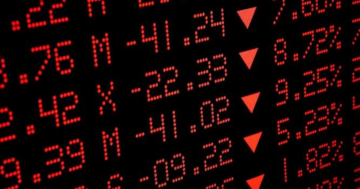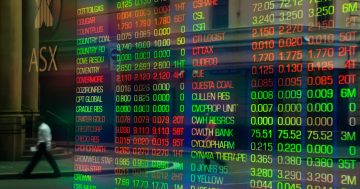Peter Switzer* says he knows the best way for nervous people to start investing in stocks.
 So you’ve heard that the stock market has done unbelievably well over the past year and you haven’t been a player? And you’d like to, but you’re a scaredy cat?
So you’ve heard that the stock market has done unbelievably well over the past year and you haven’t been a player? And you’d like to, but you’re a scaredy cat?
And let’s say you’ve saved $10,000 or were given this amount by a really loveable parent.
Well, here’s a way to play stocks without being too adventurous, but it does mean you’ll have to get your head around something called an exchange traded fund (ETF).
Before I try to make this financial term understandable, let’s just see how well stocks have done in the past year.
Let’s start with the riskiest way to play the stock market and that’s buying shares in one company only.
If you’re going to try that, I’d suggest you buy a really reliable stock, such as the CBA (Commonwealth Bank).
If you’d put $10,000 into CBA a year ago, you’d be up 49.9 per cent (let’s call it 50 per cent).
Your $10,000 would now be $15,000! How good and easy was that?
But wait, there’s more.
If you’d tried your $10,000 play into CBA in early February, your nest egg fell to $5,300.
And if you panicked about a looming recession and got out, then you lost $4,700.
On the other hand, if you gritted your teeth and believed in CBA, by now your $10,000 (which became $5,300) is now $11,111.
Over the 18 months you’re up 11.11 per cent, which isn’t bad but you’ve had some scary moments.
However, if you’d put your $10,000 into Appen (a one-time darling of the stock market, which was one of our favourite tech stocks) after a year your $10,000 would now be, wait for it, $3,235.
And if you bought the stocks before the market crashed in late February 2020, your $10,000 is only $4,700.
So there’s always a big risk.
There are two lessons here for scaredy cat investors.
- Don’t just buy one stock
But if you do, make sure it’s a best-of-breed company and try to buy it when the market is dumping it, and then hang on.
As Appen shows, lesser quality companies can take a longer time to rebound, and may never rebound.
Mind you, I think Appen is possibly a good buy now, but it’s still a risky play that scaredy cats might want to avoid.
- Buy a mix of quality stocks
The second lesson is to buy a whole lot of good companies because it takes away the threat of a company (even a good one) having a really bad run.
The scaredy cat investor should think about buying an exchange-traded fund that gives them the top 200 companies in Australia.
It’s like betting on Australia to do well economics – and business-wise.
Our top 200 companies can be bought in one ‘stock’, or more correctly, one exchange-traded fund or ETF.
Just like a stock, an ETF such as IOZ or A200 is a fund that buys the top 200 companies’ shares and rolls them into one fund.
So if the overall stock market is up 2 per cent in a day, then you’re 2 per cent richer and vice versa.
The best time to buy IOZ on the stock market was in late March last year, when the market crashed.
It then fell to $20 and has rebounded back to $31.
So that’s a gain of 55 per cent and your $10,000 would now be worth $15,500!
And if you put your $10,000 into IOZ before the Coronavirus market crash, you’d have $10,689.
Given that your investment lived through a market crash and a recession and is still up 6.8 per cent, shows that it’s a pretty good way to invest in stocks for scaredy cats!
By the way, history has shown that investing in the top 200 companies over a decade returns about 10 per cent per annum on average.
That means there will be some scary years but there’ll also be some great years.
But by betting on Australia’s top 200 companies, you get a really solid 10 per cent return.
All you have to do is not be scared when markets get really scary.
How do you do that? By knowing you’re invested in Australia’s best companies, which is like investing in Australia.
*Peter Switzer is one of Australia’s leading business and financial commentators, launching his own business more than 25 years ago.
This article first appeared at au.finance.yahoo.com.











